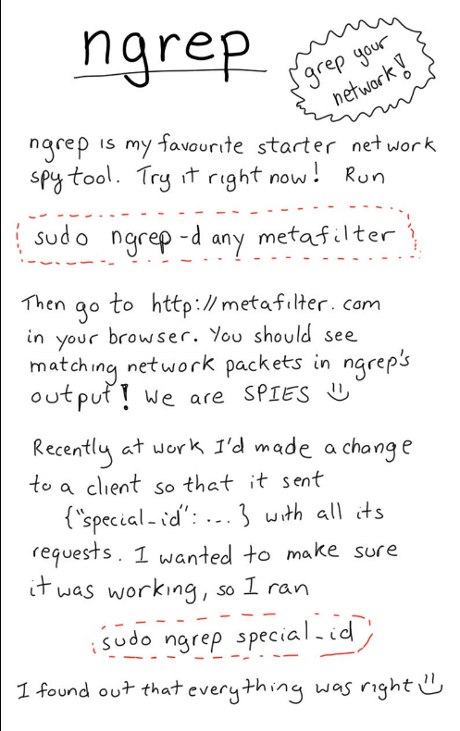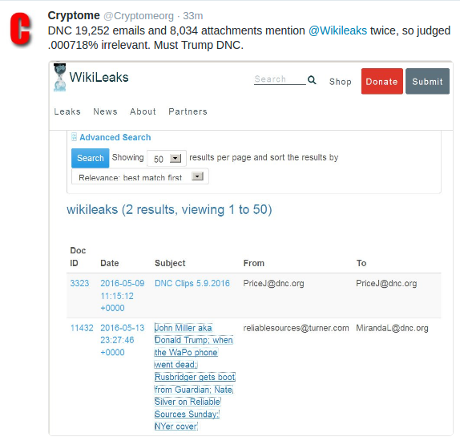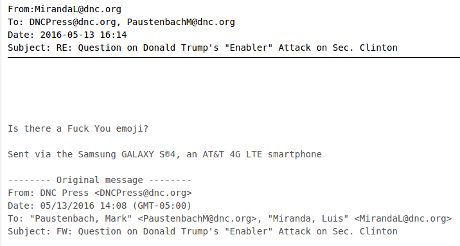Like many others, I was glad to see: IRS 990 Filings on AWS.
From the webpage:
Machine-readable data from certain electronic 990 forms filed with the IRS from 2011 to present are available for anyone to use via Amazon S3.
Form 990 is the form used by the United States Internal Revenue Service to gather financial information about nonprofit organizations. Data for each 990 filing is provided in an XML file that contains structured information that represents the main 990 form, any filed forms and schedules, and other control information describing how the document was filed. Some non-disclosable information is not included in the files.
This data set includes Forms 990, 990-EZ and 990-PF which have been electronically filed with the IRS and is updated regularly in an XML format. The data can be used to perform research and analysis of organizations that have electronically filed Forms 990, 990-EZ and 990-PF. Forms 990-N (e-Postcard) are not available withing this data set. Forms 990-N can be viewed and downloaded from the IRS website.
I could use AWS but I’m more interested in deep analysis of a few returns than analysis of the entire dataset.
Fortunately the webpage continues:
…
An index listing all of the available filings is available at s3://irs-form-990/index.json. This file includes basic information about each filing including the name of the filer, the Employer Identificiation Number (EIN) of the filer, the date of the filing, and the path to download the filing.
All of the data is publicly accessible via the S3 bucket’s HTTPS endpoint at https://s3.amazonaws.com/irs-form-990. No authentication is required to download data over HTTPS. For example, the index file can be accessed at https://s3.amazonaws.com/irs-form-990/index.json and the example filing mentioned above can be accessed at https://s3.amazonaws.com/irs-form-990/201541349349307794_public.xml (emphasis in original).
…
I open a terminal window and type:
wget https://s3.amazonaws.com/irs-form-990/index.json
which as of today, results in:
-rw-rw-r-- 1 patrick patrick 1036711819 Jun 16 10:23 index.json
A trial grep:
grep "NATIONAL RIFLE" index.json > nra.txt
Which produces:
{“EIN”: “530116130”, “SubmittedOn”: “2014-11-25”, “TaxPeriod”: “201312”, “DLN”: “93493309004174”, “LastUpdated”: “2016-03-21T17:23:53”, “URL”: “https://s3.amazonaws.com/irs-form-990/201423099349300417_public.xml”, “FormType”: “990”, “ObjectId”: “201423099349300417”, “OrganizationName”: “NATIONAL RIFLE ASSOCIATION OF AMERICA”, “IsElectronic”: true, “IsAvailable”: true},
{“EIN”: “530116130”, “SubmittedOn”: “2013-12-20”, “TaxPeriod”: “201212”, “DLN”: “93493260005203”, “LastUpdated”: “2016-03-21T17:23:53”, “URL”: “https://s3.amazonaws.com/irs-form-990/201302609349300520_public.xml”, “FormType”: “990”, “ObjectId”: “201302609349300520”, “OrganizationName”: “NATIONAL RIFLE ASSOCIATION OF AMERICA”, “IsElectronic”: true, “IsAvailable”: true},
{“EIN”: “530116130”, “SubmittedOn”: “2012-12-06”, “TaxPeriod”: “201112”, “DLN”: “93493311011202”, “LastUpdated”: “2016-03-21T17:23:53”, “URL”: “https://s3.amazonaws.com/irs-form-990/201203119349301120_public.xml”, “FormType”: “990”, “ObjectId”: “201203119349301120”, “OrganizationName”: “NATIONAL RIFLE ASSOCIATION OF AMERICA”, “IsElectronic”: true, “IsAvailable”: true},
{“EIN”: “396056607”, “SubmittedOn”: “2011-05-12”, “TaxPeriod”: “201012”, “FormType”: “990EZ”, “LastUpdated”: “2016-06-14T01:22:09.915971Z”, “OrganizationName”: “EAU CLAIRE NATIONAL RIFLE CLUB”, “IsElectronic”: false, “IsAvailable”: false},
{“EIN”: “530116130”, “SubmittedOn”: “2011-11-09”, “TaxPeriod”: “201012”, “DLN”: “93493270005081”, “LastUpdated”: “2016-03-21T17:23:53”, “URL”: “https://s3.amazonaws.com/irs-form-990/201132709349300508_public.xml”, “FormType”: “990”, “ObjectId”: “201132709349300508”, “OrganizationName”: “NATIONAL RIFLE ASSOCIATION OF AMERICA”, “IsElectronic”: true, “IsAvailable”: true},
{“EIN”: “530116130”, “SubmittedOn”: “2016-01-11”, “TaxPeriod”: “201412”, “DLN”: “93493259005035”, “LastUpdated”: “2016-04-29T13:40:20”, “URL”: “https://s3.amazonaws.com/irs-form-990/201532599349300503_public.xml”, “FormType”: “990”, “ObjectId”: “201532599349300503”, “OrganizationName”: “NATIONAL RIFLE ASSOCIATION OF AMERICA”, “IsElectronic”: true, “IsAvailable”: true},
We have one errant result, the “EAU CLAIRE NATIONAL RIFLE CLUB,” so let’s delete that, re-order by year and the NATIONAL RIFLE ASSOCIATION OF AMERICA result reads (most recent to oldest):
{“EIN”: “530116130”, “SubmittedOn”: “2016-01-11”, “TaxPeriod”: “201412”, “DLN”: “93493259005035”, “LastUpdated”: “2016-04-29T13:40:20”, “URL”: “https://s3.amazonaws.com/irs-form-990/201532599349300503_public.xml”, “FormType”: “990”, “ObjectId”: “201532599349300503”, “OrganizationName”: “NATIONAL RIFLE ASSOCIATION OF AMERICA”, “IsElectronic”: true, “IsAvailable”: true},
{“EIN”: “530116130”, “SubmittedOn”: “2014-11-25”, “TaxPeriod”: “201312”, “DLN”: “93493309004174”, “LastUpdated”: “2016-03-21T17:23:53”, “URL”: “https://s3.amazonaws.com/irs-form-990/201423099349300417_public.xml”, “FormType”: “990”, “ObjectId”: “201423099349300417”, “OrganizationName”: “NATIONAL RIFLE ASSOCIATION OF AMERICA”, “IsElectronic”: true, “IsAvailable”: true},
{“EIN”: “530116130”, “SubmittedOn”: “2013-12-20”, “TaxPeriod”: “201212”, “DLN”: “93493260005203”, “LastUpdated”: “2016-03-21T17:23:53”, “URL”: “https://s3.amazonaws.com/irs-form-990/201302609349300520_public.xml”, “FormType”: “990”, “ObjectId”: “201302609349300520”, “OrganizationName”: “NATIONAL RIFLE ASSOCIATION OF AMERICA”, “IsElectronic”: true, “IsAvailable”: true},
{“EIN”: “530116130”, “SubmittedOn”: “2012-12-06”, “TaxPeriod”: “201112”, “DLN”: “93493311011202”, “LastUpdated”: “2016-03-21T17:23:53”, “URL”: “https://s3.amazonaws.com/irs-form-990/201203119349301120_public.xml”, “FormType”: “990”, “ObjectId”: “201203119349301120”, “OrganizationName”: “NATIONAL RIFLE ASSOCIATION OF AMERICA”, “IsElectronic”: true, “IsAvailable”: true},
{“EIN”: “530116130”, “SubmittedOn”: “2011-11-09”, “TaxPeriod”: “201012”, “DLN”: “93493270005081”, “LastUpdated”: “2016-03-21T17:23:53”, “URL”: “https://s3.amazonaws.com/irs-form-990/201132709349300508_public.xml”, “FormType”: “990”, “ObjectId”: “201132709349300508”, “OrganizationName”: “NATIONAL RIFLE ASSOCIATION OF AMERICA”, “IsElectronic”: true, “IsAvailable”: true},
Of course, now you want the XML 990 returns, so extract the URLs for the 990s to a file, here nra-urls.txt (I would use awk if it is more than a handful):
https://s3.amazonaws.com/irs-form-990/201532599349300503_public.xml
https://s3.amazonaws.com/irs-form-990/201423099349300417_public.xml
https://s3.amazonaws.com/irs-form-990/201302609349300520_public.xml
https://s3.amazonaws.com/irs-form-990/201203119349301120_public.xml
https://s3.amazonaws.com/irs-form-990/201132709349300508_public.xml
Back to wget:
wget -i nra-urls.txt
Results:
-rw-rw-r– 1 patrick patrick 111798 Mar 21 16:12 201132709349300508_public.xml
-rw-rw-r– 1 patrick patrick 123490 Mar 21 19:47 201203119349301120_public.xml
-rw-rw-r– 1 patrick patrick 116786 Mar 21 22:12 201302609349300520_public.xml
-rw-rw-r– 1 patrick patrick 122071 Mar 21 15:20 201423099349300417_public.xml
-rw-rw-r– 1 patrick patrick 132081 Apr 29 10:10 201532599349300503_public.xml
Ooooh, it’s in XML! 
For the XML you are going to need: Current Valid XML Schemas and Business Rules for Exempt Organizations Modernized e-File, not to mention a means of querying the data (may I suggest XQuery?).
Once you have the index.json file, with grep, a little awk and wget, you can quickly explore IRS 990 filings for further analysis or to prepare queries for running on AWS (such as discovery of common directors, etc.).
Enjoy!









